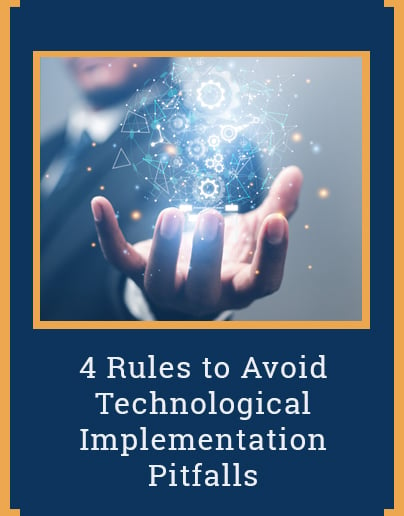Technology and the software it powers can transform businesses at any scale. But within this power, there’s an inherent danger. It needs a bridle to steer its force in a beneficial direction.
Technology is Outcome-Based (And Why That’s a Problem)
Our clients buy software to solve problems. For example, they might buy a digital experience platform that allows them to engage with customers. That sounds straightforward enough. But many companies implement platforms without realizing they’ve set loose a metaphorical stallion inside their barn. With its raw power and momentum, it can cause more than a little bit of damage. It doesn’t need to be like this, though.
The bridle that we suggest for this wild horse is digital strategy. By understanding all the implications of a new software implementation, businesses can harness and focus the raw power of technological innovation. If not, a company risks being led into unexpected places at great cost and extended timelines.
Let’s take the example of a next-generation e-commerce platform. This allows a company to standardize on a single platform across the organization. It collects data, connects and integrates to other systems, and ensures that orders can be transacted on any customer channel. Understandably, companies would be excited by the promise of a platform like this. It had huge potential as an outcome-based solution to their business challenges. But it’s not that simple.
Things often become unbridled when there’s a mismatch between a client’s expectations and a platform’s capabilities. For example, one of our clients––a major manufacturer––selected a leading software vendor as their e-commerce platform. Our client needed a platform with a robust return, refund and notification capability. In their business, these are key competitive advantages. However, the vendor’s platform isn’t built to handle physical returns on a very large scale. To find a suitable solution, we built an order information management system that pulled from our client’s existing software. This bridged the gap between what the platform offered and what the client needed. Our client’s assumptions cost them time and money that could have better been spent on implementing the technology and resulting capabilities it unlocked.
Each software vendor has a specific point of view on how e-commerce should be done. This informs the specific capabilities it builds into its platform. It also creates implicit assumptions on the systems, process, people, operating model that an organization needs to be successful. Unchecked assumptions can create all kinds of implementation challenges:
- Bad or confusing user experience
- The need for customization after implementation
- Unplanned organizational structure changes
- Confused internal tracking of what customers have done and might need
Without thoroughly checking one’s assumptions against a solution’s capabilities, expensive problems can develop very quickly. To avoid being taken for a ride, we suggest five things for companies to consider.
-
Avoid Solutions Without Strategies: Too many companies bring on technologies because they’re the “next big thing”. Sure, cloud-based solutions, eCommerce platforms and AR are transformative technologies. But before anything else, always ask: how will they add value for your customers and your company?
-
Think about Scale: Technological solutions that work well for a medium-sized company might be prohibitively expensive to scale and inefficient as a business grows. The same is true the other way around. Overbuying can crush mid-size businesses with high costs and weighty processes.
-
Don’t Forget About Employee Experience: Many businesses focus on their customers’ experience for obvious reasons. However, best-in-class experiences require significant involvement by employees to support real-time customer engagement. When integrating new and existing business systems with a customer-facing experience, companies need to carefully consider their organization’s structure, training programs, and technological inventory. Every part matters to your success.
-
Consider Relevancy: Technology allows for the personalization of customer experiences with rich content. Good engagement requires adding continual value for your customers to invite them deeper into your world. When thinking about your relevance to a customer, ask yourself: why would my customer engage with us through this new technology?
Now that you’ve asked these questions, what’s next? It’s time to start strategizing your next move. The power and promise of technology is entirely dependent on its execution. When technology is properly harnessed, it can create a more efficient and fast-moving way for you to grow and expand your business.
